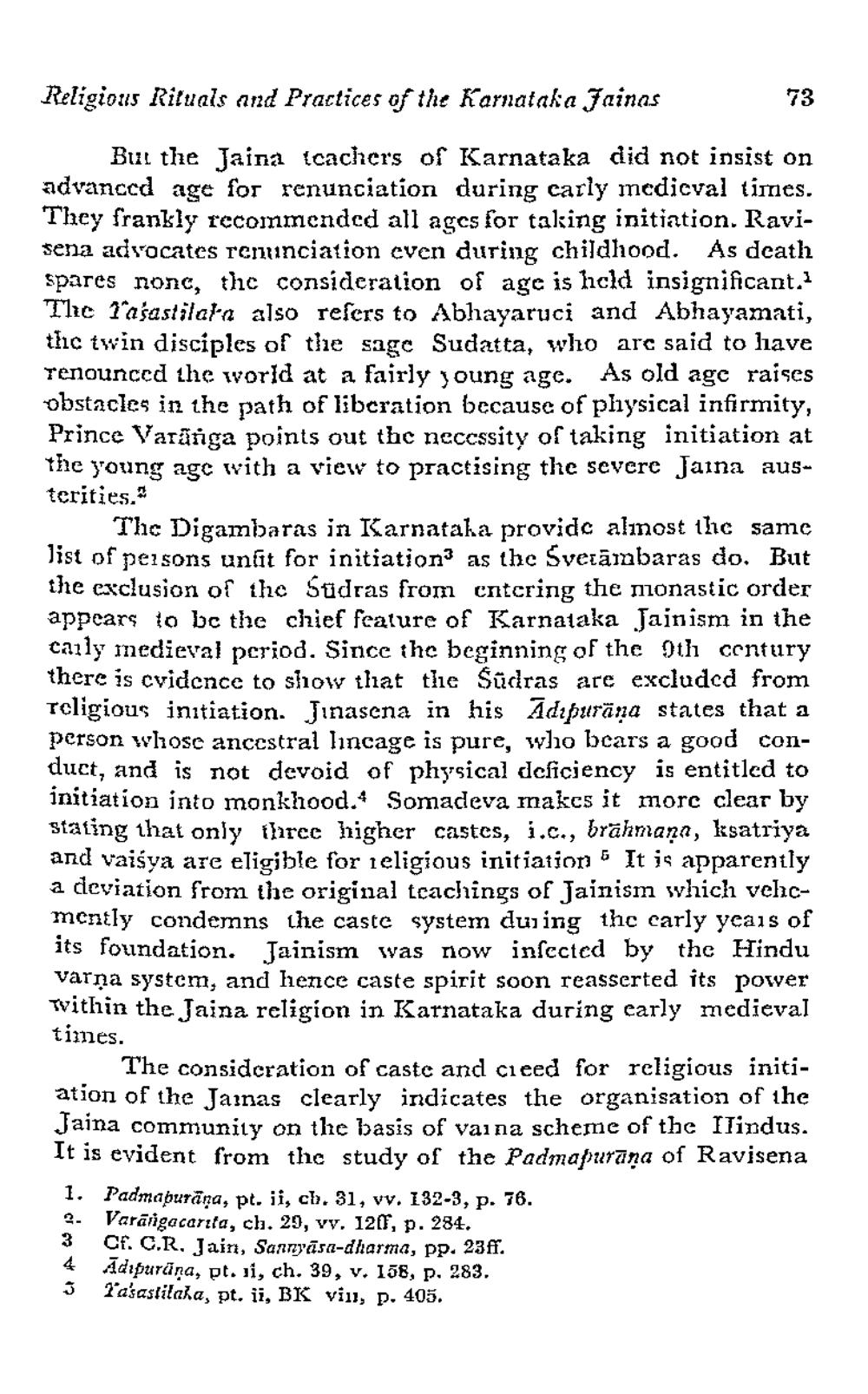________________
Religious Rituals and Practices of the Karnataka Jainos
73
But the Jaina (cachers of Karnataka did not insist on advanced age for renunciation during carly medieval times. They frankly recommended all ages for taking initiation. Ravisena advocates renunciation even during childhood. As death spares nonc, the consideration of age is hcld insignificant. The l'aśastilare also refers to Abhayaruci and Abhayamati, the twin disciples of the sagc Sudatta, who arc said to liave Tenounced the world at a fairly young age. As old age raises obstacles in the path of libcration because of physical infirmity, Prince Varātiga points out the necessity of taking initiation at the young age with a view to practising the severe Jaina austerities.
The Digambaras in Karnataka provide alınost thc same list of persons unkt for initiation as the Sverāmbaras do. But the cxclusion of the Südras from cntcring the monastic order appears to be the chief feature of Karnataka Jainism in the caily medieval period. Since the beginning of the 9th century there is cvidence to show that the Sūdras are excluded from religious initiation. Jinasena in his Adipurāņa states that a person whose ancestral lincage is pure, who bcars a good conduct, and is not devoid of physical deficiency is entitled to initiation into monkhood.4 Somadeva makes it morc clear by stating that only three higher castes, i.C., brahmann, ksatriya and vaisya are eligible for religious initiation 5 It is apparently a deviation from the original tcachings of Jainism which vehcmcntly condemns the caste system during thc carly years of its foundation. Jainism was now infected by the Hindu varņa system, and hence caste spirit soon reasserted its power within the Jaina religion in Karnataka during early medieval times.
The consideration of caste and cieed for religious initiation of the Jainas clearly indicates the organisation of the Faina community on the basis of vaina scheme of the Ilindus. It is evident from the study of the Padmapurana of Ravisena 1. Padmapurāņa, pt. ii, ch.31, vv. 132-3, p. 76.
Varānigacarita, ch. 29, vy. 120, p. 284. 3 Cf. C.R, Jain, Sannyāsa-dharma, pp. 23ff.
Adipuräna, pt.ji, ch. 39, v. 158, p. 283. 3 rasastilaka, pt. ii, BK vill, p. 405.




